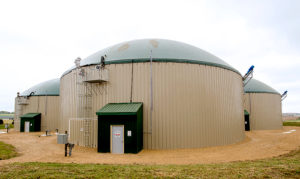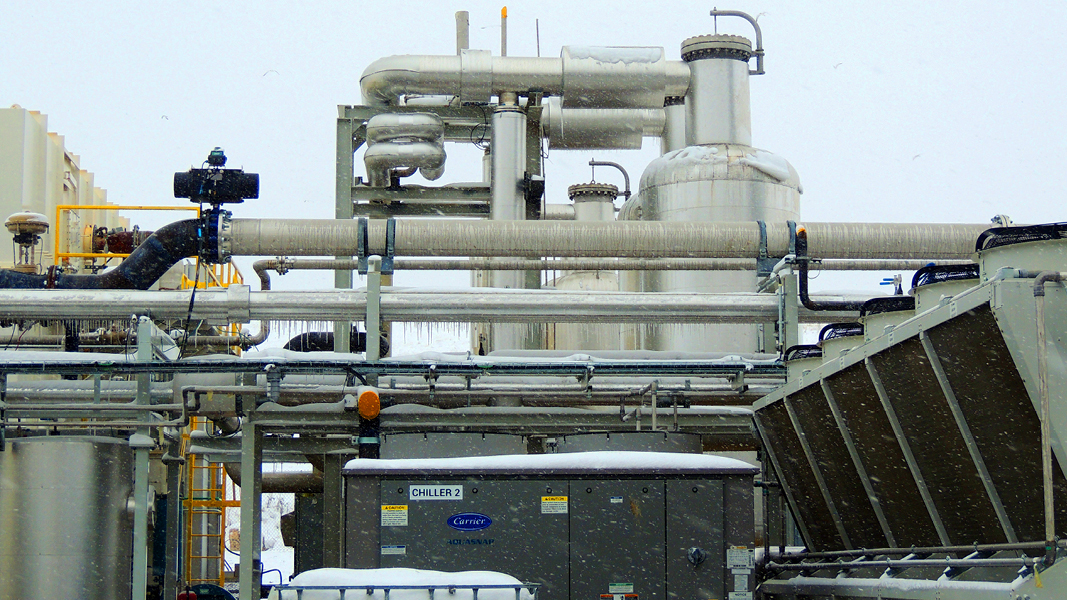Top:Dane County (WI) landfill’s renewable natural gas pipeline injection facility. Photo by Doug Pinkerton
The Wisconsin Biogas Council reports the Public Service Commission of Wisconsin-Office of Energy Innovation (OEI) and University of Wisconsin at Stevens Point (UWSP) have initiated a statewide Biogas Feedstock and Industry Survey. “The survey aims to explore and assess the current status, challenges, and future opportunities of biogas facilities throughout Wisconsin,” notes the Council. “In partnership with both students and staff at UWSP, more than 250 Wisconsin facilities, including wastewater treatment facilities, landfills, industrial and food processing facilities, have been asked to participate through electronic and mail survey submission.” Responses were being collected through January, with a final report of its findings expected to be released to the public by April 2021.

Dairy digester in Middleton (WI), a unique partnership between Gundersen Health Systems, Dane County and 3 dairies.
This project serves as a follow-up to OEI’s Biogas Survey Report conducted in 2015. A 2015 BioCycle article on the findings noted that the state had 172 digesters with 140 MW of electric generation capacity covering a variety of sectors, sizes, operational approaches, and system applications. The 2015 survey responses outlined four primary challenges to system operation and development of the biogas industry in Wisconsin as a whole:
- Cost-effective and safe operation of electricity generators, which was particularly important as power generation was relied upon for a primary source of project revenue;
- Lack of inter-sector collaboration and information sharing, leading to conflicts over organic waste resources and appropriate project siting;
- Ability to generate revenue for a biogas project had become more challenging, which was leading many in the industry to assess possibilities to generate revenue outside of power generation, such as renewable natural gas and compressed natural gas (which has definitely come to fruition in the state since 2015); and
- Establishing effective system operation and maintenance procedures, a particularly challenging area at the time for agricultural systems.












